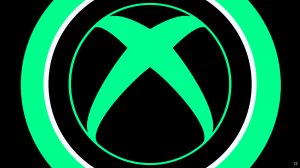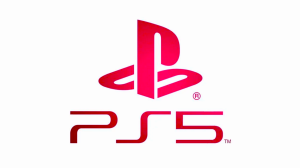
Jupiter’s Legacy, one of the biggest hits at Image Comics in recent years, makes its long-awaited return at the end of June. The superhero epic spanning three generations of characters will resume its narrative as Jason and his family prepare to fight back against the heroes who previously seized control of the world. Volume two of Jupiter’s Legacy will also avoid the delays that plagued the first five issues with art for the second half almost entirely complete already. It promises to be every bit as exciting and thought-provoking while also providing readers a new installment every month.
Videos by ComicBook.com
After an interview with writer Mark Millar, Comicbook.com continued the series of interviews with the full creative team, sitting down with the series artist Frank Quitely to discuss the return of Jupiter’s Legacy and what he hopes to achieve with the series.
Jupiter’s Legacy has been purposefully divided into two halves. Mark has described them as “despair” and “hope”. When approaching the second half of the story, how did you alter your approach to evoke that change in tone?
Frank Quitely: Funnily enough, I was in despair myself (relatively speaking) when I was on the second half of volume 1 because I had to finish off a couple of other prior commitments and the book ended up running really late, and I’m full of hope now cause I’m working on volume 2 cause I’m on the 4th issue so I’m really feeling good about it.
Do you find the quality of your mood (despairing, hopeful, or anything in between) filters into the tone of your work?
Quitely: Yes. Sometimes when I look back at the pages I’ve drawn I think I can see signs of my mood in the work, but it’s an inexact science.
This is a story of generations. In the first volume the focus lay on the original superheroes and their children. You can see in their costumes and dress a distinction between classic sensibilities and more modern concern. With the introduction of Jason and grandchildren of the original heroes, how are you distinguishing the design of the third generation?
Quitely: The designs for all the characters tend to work in conjunction with the writing: The first wave of heroes had classic looking costumes with masks and capes and tights; the second generation tended to be more ‘action suit’ – still recognisably a costume, but more obviously practical; then there’s the ‘civvies’ look for those characters who aren’t buying into a costume of any kind; and there’s Jason, with his costume comprising sports under layers, backpack, and home made mask in the same colours as his grandfather.
Along those same lines there’s a lot of new characters, specifically supervillains, being introduced in the second half. Do you approach the men and women on the “wrong” side of the law in a different way?
Quitely: There’s no particular dress code divide for good guys and bad guys – on both sides some like the costumes and some don’t.
Jupiter’s Legacy sometimes reads as a commentary on or reflection of the superhero genre. Its focus on generations and changing modes of thought remind me of the way many superhero fans comfortably break down the genre into specific ages. What were some of your biggest influences in creating Jupiter’s Legacy?
Quitely: Golden Age comics influenced our approach to the first generation of heroes in Jupiter’s Legacy, and Golden and Silver Age (for the sidekicks in particular) in Jupiter’s Circle. As fans, we’re all familiar with the dark turn comics took in the 80’s, and with the various trends that saw superpowered characters in suits influenced by the movies, in ironically retro costumes, in Kick Ass-style homemade costumes, and in civilian clothes – and all that stuff’s in the mix. As our story spans the decades from the birth of the superhero to the near future, we draw on the whole canon when creating the mood and look and feel of our world.
You’re someone who has had a significant impact on the look of the superhero genre over the past couple of decades. From the modernized costumes in New X-Men to the revitalization of Silver Age tropes in All-Star Superman, you have brought new ideas to life with each work. What do you perceive your biggest accomplishment to be here?
Quitely: It’s always fun to update something like the X-Men or take something like Superman back to a classic look. With Jupiter’s Legacy we’ve got nearly a century’s-worth of characters from widely varying geographical and cultural backgrounds, and we’ve got free reign to do as we please with them in terms of aesthetics and story.
Widening the scope beyond the genre of the book, are there aspects of the storytelling that you found to be pushing and challenging you as a comics artist in new ways?
Quitely: There’s a scene where Raikou is fighting the newly assembled team, and she strips their consciousness’ from their bodies, trapping each of them in a ‘place’ that reflects their memories, or their imaginations, or their superpowers, or their personalities, which is complex enough, but she takes them all out over a couple of pages so she’s doing a few at a time and it took an age to arrange the whole sequence to get it to be both easy to understand and to get it to flow smoothly – but then that’s Mark for you – “Hey, I’ve thought of something really complicated that nobody’s seen before, can you draw it for me?” Next time we work together I’m going to write the story and get him to draw it!
You are working with a new colorist, Sunny Gho, on this volume of the story. What has the experience been like collaborating with Sunny? Has he surprised you in any ways so far?
Quitely: Sunny’s an amazing colourist and I’m delighted to have him on board.
I was disappointed that Peter Doherty wasn’t able to do the second volume, but because he’d put his stamp on the book Mark and I made the mistake of asking Sunny to work in a way that wouldn’t look too different from Peter – and Sunny really did – he coloured the first very much like Peter would, but it lacked something of that spark that Sunny’s known for. I’d been going back looking at Sunny’s previous colouring, particularly on Leinil’s work and when I saw what he’d done on the first issue I immediately knew it had been a mistake to ask him to work like someone else, so we got back to him, apologised, and asked him to do his own thing, which thankfully is what he’s doing now and we’re all loving it.
Is there a particular panel or series of panels from the first issue that you would like to share with readers and discuss working on?
Quitely: The action on page 11 is taking place on the sidewalk between the airport doors and the parked vehicles. It’s broken down into nine frames that move across the page through the physical space and through different fragments of time, and Hutch is moving through and across the frames and the gutters as he teleports through the fight.

In contrast, pages 17 and 18 show the vastness of the Supermax prison, so rather than going for action we’ve got scale and atmosphere as a backdrop for the interactions between Brandon and Walter, as well as being a reminder of the vast reserve of supers that are potentially in reserve.

Similarly, with page 20, we’re introduced to Raiku, the formidable Super on the front cover;Repro, another powerhouse, who’s in suspended animation; and the new team as they gather in the wings before the explosive action of issue 2.

The final order cutoff for Jupiter’s Legacy #1 (vol. 2)is Monday, June 6th. Be sure to pre-order from your local comic store and pick up the issue when it arrives on Wednesday, June 29th in stores and online.
Chase Magnett is a freelance journalist, critic, and editor working with comics, film, and television. He has been hooked on comics since grabbing an issue of Suicide Squad from a back issue bin fifteen years ago. When Chase is not working with comics in some way he spends his time rooting for the San Francisco 49ers and grilling. He currently contributes to ComicBook.com and other outlets.









